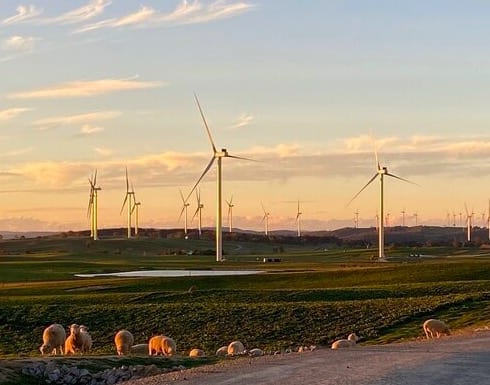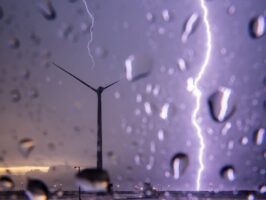A landmark investigation in the United States into the impact of wind farms on nearby property values has found that any negative impact is restricted to “homes located within 1 mile of a commercial wind turbine”, and even then, the impact is limited to 3 to 5 years.
There have been many arguments bandied about in local efforts to prevent the construction of onshore wind farms, prime among them the potential impact construction and operation will have on nearby real estate prices.
Several studies over the years have found little to no evidence of this supposed result of building onshore wind farms, but a new and statistically significant study conducted by the United States’ Lawrence Berkeley National Laboratory has dug into the numbers to conclusively demonstrate what was only hinted at before.
The new study, published last week in the journal Energy Policy, reviewed 500,000 home sales within five miles (around 8 kilometres) of US wind projects. Focusing on the time before, during, and after project construction, the study found that homes farther than 2 miles away from a wind turbine are unaffected.
The 500,000 homes analysed in Berkely Lab’s study are spread across 34 states and include 428 unique wind projects announced, built, and under operation between 2005 and 2020.
The dataset spans 4 years prior to significant activity began on the project area – referred to as “announcement”, to more than 6 years after the project began operating.
Berkeley Lab found that home sale prices that are affected after the “announcement” period of the project are limited to homes within 2 miles of the project – and even then, the impact on homes within 1 to 2 miles “experience much smaller impacts”.
The report found that “homes located within 1 mile of a commercial wind turbine experience approximately an 11% decline in value following the announcement of a new commercial wind energy project, relative to counterfactual homes located 3 to 5 miles away.”
However, those property values that suffer a decline quickly recover any loss, returning to “inflation-adjusted pre-announcement levels three to five years after project operation commences.”
Interestingly, adverse effects on real estate value are not evident within a half mile of a turbine – though this might have more to do with the lower number of property sales – nor outside of 1.25 miles.
“If property value impacts exist within that distance,” Berkeley Lab note, “they were too small and/or too infrequent to result in any widespread, statistically observable impact within the study model.”
The study found that impacts on real estate value were in greater evidence in more densely populated US counties with populations greater than 250,000, with impacts “not apparent in home prices near projects in more rural counties”.
The value of this research could be vital for governments and pro-renewable advocates and developers and help to counter anti-wind propaganda.
However, the researchers note important caveats to their findings, explaining that their study “did not compare home values in wind communities to communities without wind, nor did it examine the impact of other economic effects such as increased local tax revenue and worker income that might increase home prices across communities with wind development.”
The report’s authors are, however, planning to examine these specific issues in future iterations of their research.










